Anhui Feichun Special Cable Co.,Ltd Li.wang@feichuncables.com
What is an Armoured Cable and How is It Classified?
Discover what armoured cables are, their classifications (SWA, STA, AWA), and why they're essential for South African mining, industrial, and infrastructure applications. Learn about construction, standards, and safety benefits.
Li.wang@Feichun Cable
7/17/202511 min read
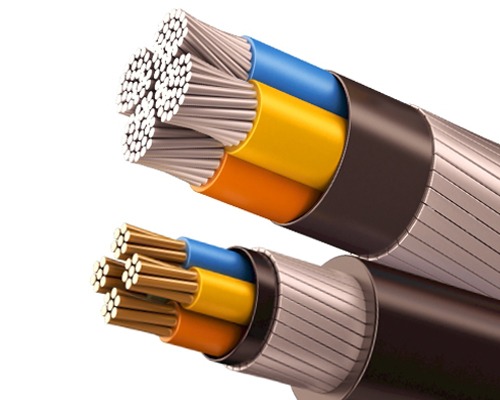

In South Africa's demanding industrial landscape, where mining operations stretch deep underground and infrastructure projects face extreme environmental challenges, cable protection isn't just important—it's absolutely critical. From the gold mines of the Witwatersrand to the platinum operations in the Bushveld Complex, electrical systems must withstand crushing forces, corrosive environments, and mechanical stresses that would destroy ordinary cables in minutes.
The recent challenges faced by Eskom's aging infrastructure and the ongoing load-shedding crisis have highlighted the importance of robust electrical systems. When power finally returns after Stage 6 load-shedding, the last thing any facility manager wants is cable failures that could extend downtime even further. This is where armoured cables prove their worth, providing the mechanical protection and safety containment that keeps South African industry running.
Armoured cables represent a crucial advancement in electrical engineering, designed specifically to protect conductors from the harsh realities of industrial environments. Whether it's preventing damage from rock falls in deep-level mines or protecting cables from the inevitable knocks and impacts of construction sites, these specialised cables form the backbone of reliable power distribution across the country.
What is an Armoured Cable?
An armoured cable is fundamentally a standard electrical cable enhanced with a protective metallic layer that shields the conductors from external mechanical forces. This armour, typically consisting of steel wire, steel tape, or aluminium wire, wraps around the cable's core components to create a robust barrier against crushing, cutting, impact, and penetration.
The core structure of an armoured cable includes several critical layers working together. At the centre lie the conductors—copper or aluminium wires that carry the electrical current. These conductors are surrounded by insulation material, typically PVC, XLPE (cross-linked polyethylene), or EPR (ethylene propylene rubber). Around this insulated core, a bedding layer provides additional protection before the metallic armour is applied.
The armour layer itself serves multiple purposes beyond simple mechanical protection. It acts as a containment system, preventing dangerous energy discharge if the cable suffers internal faults or arcing. This containment feature is particularly crucial in environments where explosive gases might be present, such as coal mines or petrochemical facilities.
The outermost layer, known as the sheath, provides the final barrier against environmental factors including UV radiation, moisture, chemicals, and varying soil compositions. This comprehensive layered approach ensures that armoured cables can maintain their integrity even under the most challenging conditions.
Why Use Armoured Cables?
The decision to specify armoured cables often comes down to environmental necessity and safety requirements. In South Africa's mining sector, where tunnels can extend kilometres underground and equipment operates in confined spaces with extreme mechanical stresses, unprotected cables simply cannot survive.
Consider the recent developments in the Merensky Reef platinum mining operations, where automated equipment and sophisticated monitoring systems require reliable power distribution in environments where rock falls and equipment impacts are daily occurrences. Standard cables would fail within weeks, if not days, under these conditions.
Underground installations present unique challenges that make armoured cables essential. The combination of moisture, chemical exposure from groundwater, and the constant threat of mechanical damage from excavation equipment creates an environment where only the most robust cable designs can function reliably. The steel or aluminium armour provides the necessary protection against these hazards while maintaining electrical integrity.
Fire safety represents another critical consideration. Armoured cables help contain electrical faults, preventing the spread of fires that could prove catastrophic in confined spaces. This containment capability has become increasingly important as South African safety regulations have tightened following several high-profile industrial incidents.
Direct burial applications, common in utility installations and infrastructure projects, also benefit significantly from armoured cable protection. The recent expansion of renewable energy projects across the Northern Cape and other provinces involves extensive underground cable networks that must withstand ground settlement, root penetration, and accidental excavation damage.
Types of Armoured Cables
Steel Wire Armoured (SWA) Cable
Steel Wire Armoured cables represent the most common type of armoured cable used in South African power distribution systems. These cables feature a layer of galvanised steel wires wound around the cable core, providing excellent tensile strength and mechanical protection.
SWA cables excel in applications requiring high tensile loads, making them ideal for vertical installations in mine shafts and building risers. The steel wire construction can withstand significant pulling forces during installation, a crucial characteristic when cables must be drawn through long conduit runs or lifted to substantial heights.
The magnetic properties of steel wire armour provide excellent low-frequency shielding, reducing electromagnetic interference that could affect sensitive instrumentation. This characteristic makes SWA cables particularly suitable for power distribution in industrial facilities where heavy machinery operates nearby.
However, the magnetic nature of steel creates eddy current losses in single-core AC applications, limiting SWA cables primarily to multicore configurations for alternating current systems. The steel armour also adds considerable weight to the cable, which must be considered in installation planning and support structure design.
Steel Tape Armoured (STA) Cable
Steel Tape Armoured cables utilise flat steel strips rather than wires, creating a different protection profile optimised for specific applications. The tape construction provides excellent protection against crushing forces while maintaining flexibility superior to wire armour.
STA cables prove particularly effective in direct burial applications where the primary threat comes from compressive forces rather than tensile loads. The flat tape distributes crushing forces more effectively than wire armour, making these cables ideal for underground installations where ground settlement or vehicle traffic above might create compressive stresses.
The manufacturing process for STA cables is generally less complex than SWA production, resulting in lower costs while maintaining excellent protection characteristics. This cost advantage makes STA cables attractive for large-scale installations where budget constraints are significant.
The tape construction also provides superior magnetic shielding compared to wire armour, making STA cables suitable for applications where electromagnetic interference must be minimised. This characteristic has proven valuable in the telecommunications and data transmission applications that support modern mining operations.
Aluminium Wire Armoured (AWA) Cable
Aluminium Wire Armoured cables address the specific challenges associated with single-core AC applications. Unlike steel, aluminium is non-magnetic, eliminating the eddy current losses that plague steel-armoured cables in alternating current systems.
AWA cables find extensive use in high-voltage transmission applications where single-core cables are preferred for electrical reasons. The aluminium armour provides mechanical protection equivalent to steel wire while avoiding the magnetic losses that would otherwise reduce system efficiency.
The lighter weight of aluminium compared to steel creates handling advantages during installation, particularly important for long cable runs or installations in difficult terrain. This weight advantage has proven valuable in the renewable energy sector, where cables must often be installed across challenging topography.
Corrosion resistance represents another advantage of aluminium armour, particularly in coastal environments or areas with high groundwater salinity. The natural oxide layer that forms on aluminium provides excellent long-term protection against environmental degradation.
Braided Armour Cable
Braided armour cables feature multiple fine copper wires interwoven into a flexible metallic sheath around the conductors. This construction provides excellent flexibility while maintaining good mechanical protection and superior electromagnetic shielding.
The flexibility of braided armour makes these cables ideal for dynamic applications where cables must flex repeatedly during operation. Mobile mining equipment, such as continuous miners and shuttle cars, often requires cables that can withstand constant movement and flexing without failure.
Braided armour excels at suppressing electromagnetic interference, making these cables valuable in applications involving sensitive electronic equipment. The fine wire construction creates a more effective shield against high-frequency interference compared to wire or tape armour.
The copper construction of braided armour also provides an excellent path for fault currents, enhancing the overall safety characteristics of the cable system. This safety benefit is particularly important in underground mining applications where personnel safety depends on proper fault current handling.
Galvanised Steel Strip Armoured Cable
Galvanised Steel Strip Armoured cables represent a specialised variant designed for environments with significant corrosion challenges. The galvanised coating provides enhanced protection against rust and chemical attack while maintaining the mechanical benefits of steel armour.
These cables find particular application in marine environments, chemical processing facilities, and areas where cable exposure to corrosive substances is unavoidable. The galvanised coating significantly extends cable life in these challenging conditions, reducing maintenance requirements and improving system reliability.
The flat strip construction provides excellent protection against crushing forces while the galvanised coating ensures long-term durability in corrosive environments. This combination makes these cables ideal for offshore installations and coastal industrial facilities.
Construction and Materials
The construction of armoured cables involves careful selection of materials and precise manufacturing processes to ensure optimal performance. The conductor material, typically copper or aluminium, must provide excellent electrical conductivity while maintaining mechanical properties suitable for the intended application.
Copper conductors offer superior conductivity and mechanical strength, making them the preferred choice for high-performance applications. The excellent conductivity of copper reduces power losses and heat generation, while its mechanical properties ensure reliable performance under stress.
Aluminium conductors provide cost advantages and weight reduction compared to copper, making them suitable for large-scale installations where material costs are significant. Modern aluminium alloys offer improved mechanical properties while maintaining excellent conductivity for most applications.
Insulation materials play a crucial role in cable performance and safety. PVC (polyvinyl chloride) provides good electrical properties and cost-effectiveness for standard applications. XLPE (cross-linked polyethylene) offers superior electrical characteristics and thermal performance for high-voltage applications.
EPR (ethylene propylene rubber) insulation provides excellent flexibility and environmental resistance, making it suitable for mobile applications and harsh environments. The choice of insulation material significantly impacts cable performance and longevity.
The bedding layer, typically composed of polymer compounds, provides cushioning between the insulation and armour while preventing damage during manufacturing and installation. This layer also helps maintain cable geometry and prevents armour migration that could compromise performance.
Applications of Armoured Cables
Mining Applications
South Africa's mining industry represents one of the most demanding environments for electrical cables. Deep-level gold mines, with shafts extending over 3,000 metres below surface, require cables that can withstand extreme mechanical stresses, high temperatures, and corrosive environments.
The recent modernisation of mining operations, including the introduction of automated equipment and advanced monitoring systems, has increased the importance of reliable power distribution. Armoured cables provide the mechanical protection necessary to ensure these sophisticated systems operate reliably in the harsh underground environment.
Surface mining operations present different challenges, including exposure to weather, dust, and heavy mobile equipment. Armoured cables in these applications must withstand repeated impacts from rock falls, equipment traffic, and the mechanical stresses associated with large-scale earth moving operations.
Industrial Applications
Manufacturing facilities across South Africa rely on armoured cables for power distribution in environments where mechanical damage is a constant threat. The automotive industry, centred in Gauteng and the Eastern Cape, uses armoured cables to protect power systems from the mechanical stresses of heavy machinery and automated production lines.
Steel production facilities, such as those operated by ArcelorMittal in Vanderbijlpark, require cables that can withstand extreme temperatures, mechanical impacts, and corrosive environments. Armoured cables provide the necessary protection while maintaining electrical integrity in these demanding conditions.
Petrochemical facilities present unique challenges, combining mechanical stress with chemical exposure and fire safety requirements. Armoured cables in these applications must provide mechanical protection while meeting stringent safety standards for hazardous environments.
Infrastructure Applications
The expansion of South Africa's renewable energy sector has created significant demand for armoured cables in utility-scale installations. Wind farms in the Eastern and Western Cape require robust underground cable networks that can withstand ground movement, moisture, and accidental excavation damage.
Solar installations across the Northern Cape and other provinces rely on armoured cables for DC power collection and AC transmission systems. The harsh environmental conditions in these areas, including extreme temperatures and UV exposure, make cable protection essential for long-term reliability.
Rail electrification projects, including the ongoing modernisation of commuter rail systems in major metropolitan areas, require cables that can withstand vibration, mechanical impact, and environmental exposure while maintaining electrical performance.
Compliance and Safety Standards
South African electrical installations must comply with various national and international standards to ensure safety and reliability. The South African National Standards (SANS) provide specific requirements for cable construction, installation, and testing that armoured cables must meet.
SANS 1339 specifies requirements for low-voltage cables, including construction standards and performance criteria for armoured cables. These standards ensure that cables meet minimum safety and performance requirements for South African conditions.
International standards, including IEC (International Electrotechnical Commission) specifications, provide additional guidance for cable design and testing. Many South African manufacturers certify their products to both SANS and IEC standards to ensure compatibility with international projects.
Fire safety requirements have become increasingly stringent following several high-profile industrial incidents. Armoured cables must meet specific flame-retardant and low-smoke emission requirements, particularly for installations in public buildings and underground facilities.
The containment properties of armoured cables contribute significantly to fire safety by preventing the spread of electrical faults and reducing the risk of fire propagation. This containment capability is particularly important in underground installations where evacuation might be difficult.
Advantages and Limitations
Advantages
Armoured cables offer numerous advantages that make them essential for demanding applications. The primary benefit is mechanical protection, allowing cables to operate reliably in environments where standard cables would fail quickly. This protection translates directly into reduced maintenance costs and improved system reliability.
The safety benefits of armoured cables cannot be overstated. The containment of electrical faults prevents dangerous energy discharge that could injure personnel or damage equipment. This safety characteristic is particularly important in underground mining operations where personnel safety is paramount.
Longer service life represents another significant advantage. The mechanical protection provided by armour dramatically extends cable life in harsh environments, reducing replacement costs and minimising system downtime. This longevity is particularly valuable in applications where cable replacement is difficult or expensive.
The electromagnetic shielding properties of armoured cables provide additional benefits in environments with high electrical noise. This shielding capability helps maintain signal integrity and reduces interference with sensitive electronic equipment.
Limitations
Despite their advantages, armoured cables have limitations that must be considered in system design. The additional weight of armour requires stronger support structures and can complicate installation, particularly in long cable runs or elevated installations.
Reduced flexibility compared to unarmoured cables can limit applications where frequent movement or tight bending radii are required. The armour layer adds stiffness that may be problematic in some installations.
Higher costs represent a significant consideration, particularly for large-scale installations where material costs are substantial. The additional manufacturing complexity and materials required for armour increase cable prices compared to standard alternatives.
Installation complexity increases with armoured cables, requiring specialised techniques and equipment for proper termination and jointing. This complexity can increase installation time and costs, particularly for smaller contractors unfamiliar with armoured cable techniques.
Conclusion
Armoured cables represent an essential component of South Africa's electrical infrastructure, providing the mechanical protection and safety characteristics necessary for reliable operation in demanding environments. From the depths of underground mines to the expansive solar installations of the Northern Cape, these robust cables ensure that electrical systems continue functioning despite the mechanical stresses and environmental challenges that would destroy standard cables.
The classification of armoured cables—whether SWA, STA, AWA, braided, or galvanised steel strip—provides options tailored to specific application requirements. Understanding these classifications enables engineers and project managers to select the most appropriate cable type for their particular challenges, ensuring optimal performance and cost-effectiveness.
The construction materials and manufacturing processes used in armoured cable production have evolved to meet the increasingly demanding requirements of modern industrial applications. From the conductor materials to the outer sheath compounds, each component plays a crucial role in ensuring long-term reliability and safety.
As South Africa continues to modernise its infrastructure and industrial capabilities, the importance of armoured cables will only increase. The ongoing expansion of renewable energy projects, the modernisation of mining operations, and the development of new industrial facilities all depend on reliable electrical distribution systems protected by armoured cables.
The key to successful armoured cable implementation lies in proper selection based on specific application requirements, compliance with relevant standards, and recognition of both the advantages and limitations of these specialised cables. When properly specified and installed, armoured cables provide the mechanical protection, safety characteristics, and long-term reliability that South African industry demands.
For project managers, engineers, and facility operators, understanding armoured cable classifications and characteristics is essential for making informed decisions that ensure safety, reliability, and regulatory compliance in demanding industrial environments. The investment in proper cable protection pays dividends through reduced maintenance costs, improved system reliability, and enhanced personnel safety—benefits that are particularly valuable in South Africa's challenging industrial landscape.
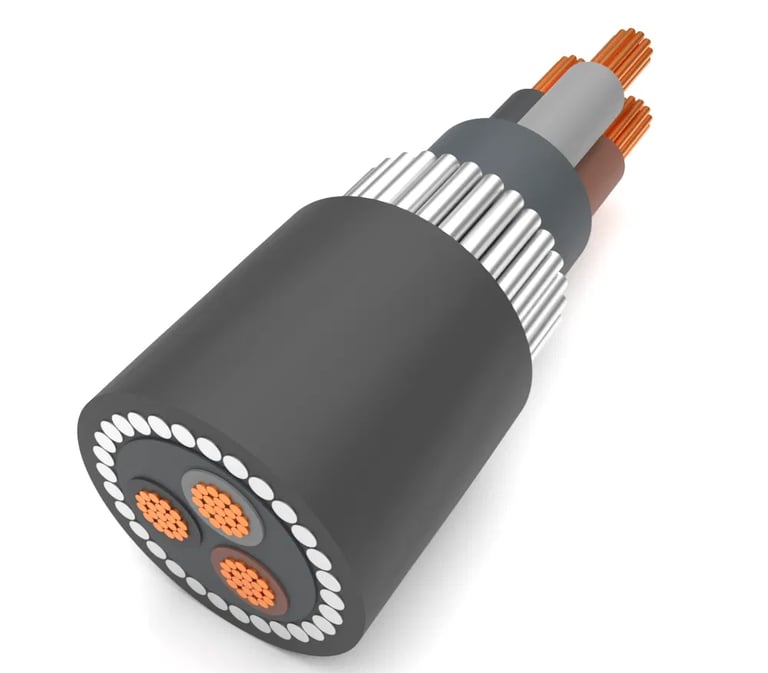

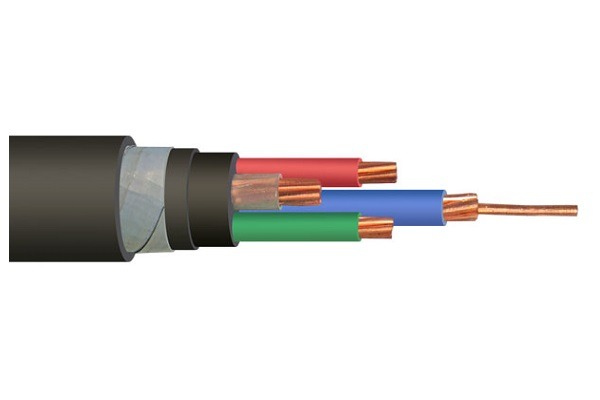

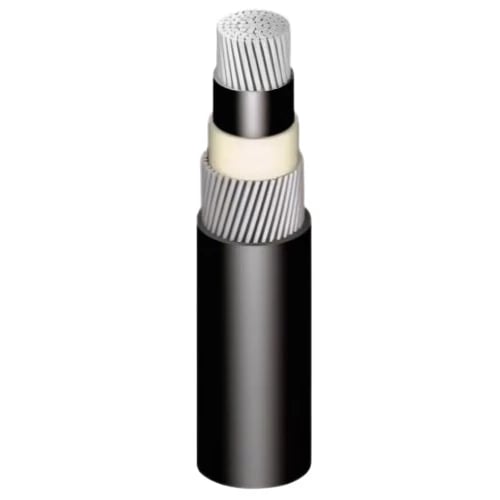

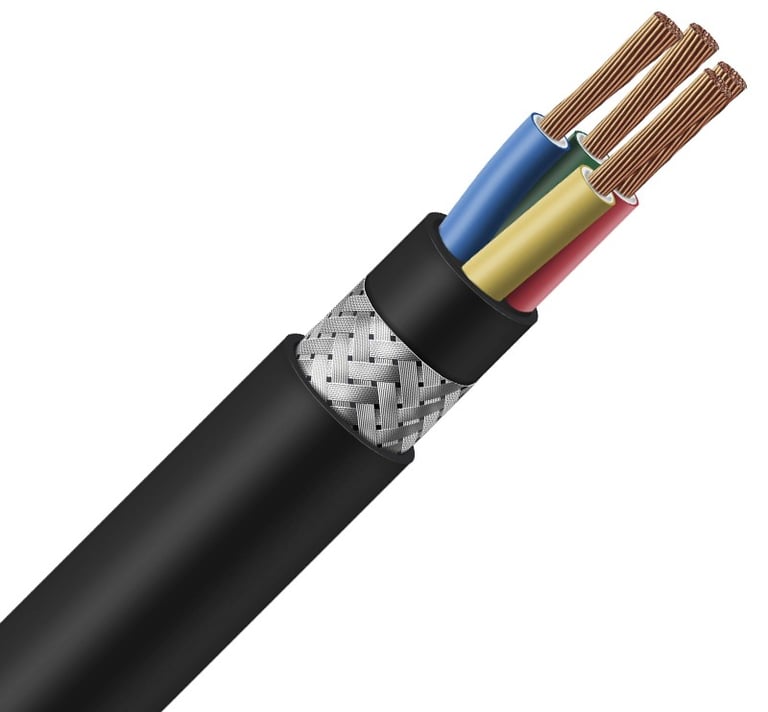

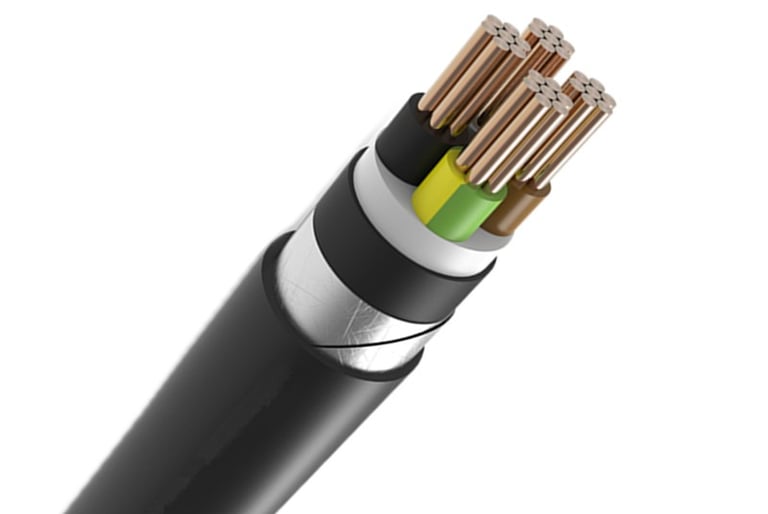


Email Address: Li.wang@feichuncables.com
© 2025. All rights reserved.


One-click to Quickly Contact
Products
Offshore & Marine Cable
XLPE Cable
Contact
Company
Location:
Building A Private Science and Technology Park, Hefei Economic and Technological Development Zone, Anhui Province, China
